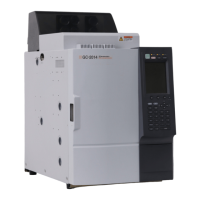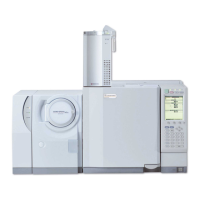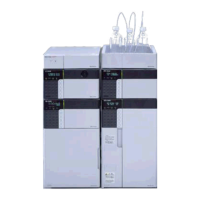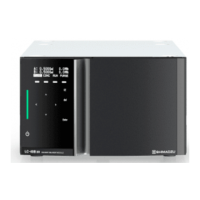49
4 Installing Capillary Columns and Setting Analytical Flow Lines
4.2
4.
GC-2014
4.2Capillary Analysis Using the Dual FID
(When a detector adapter with purge is used)
To perform capillary analysis using a unit with the dual FID, makeup gas needs to be
supplied to the FID that a column is connected to.
In order to supply makeup gas, attach a detector adapter with purge (P/N 221-34012-91) to
the joint of the dual FID. Connect the purge piping of the adapter to the dual INJ so that
makeup gas is supplied from the dual AFC through the dual INJ.
(The dual AFC is off the line and operates as an independent mass flow controller.)
Although an adapter and column are connected to the right (R) sides of the dual INJ and
dual FID in the figure below, they can be connected to either side (L/R).
Fig. 4.2.1 Dual FID (detector adapter)
Column
Detector
adapter
with purge
Dual FID
L
(L) (R)
Dual INJ
R
L
R
Dual AFC
SPL
AFC
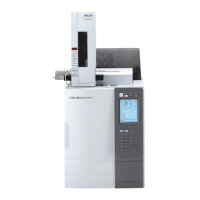
